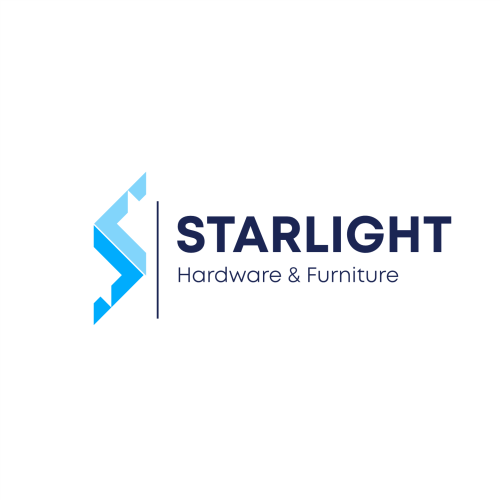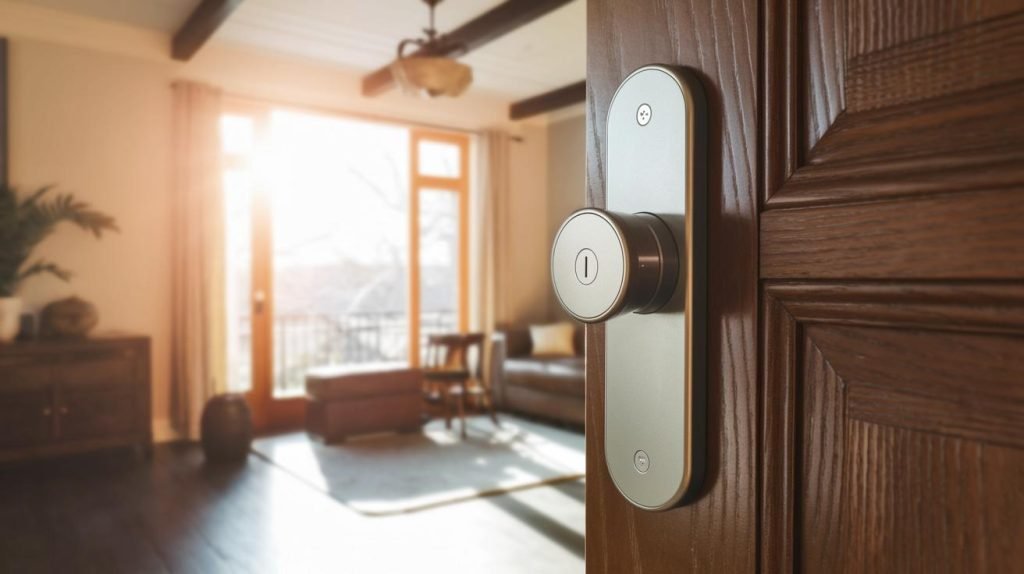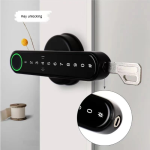Think you need to pay top dollar for top-tier smart locks? Think again!
China’s lock makers have spent over a decade fine-tuning lean manufacturing. They blend smart design with strict safety checks. The result? A lock with a smooth metal faceplate, a biometric fingerprint sensor (a reader that checks your unique fingertip pattern) and built-in Wi-Fi modules.
You’ll often pay 20 to 30 percent less per unit than you would for U.S. brands. Even with import taxes, suppliers cut material bills so prices stay steady.
If you’re after quality and healthy profit margins, importing from China is your best bet. It’s a smart move.
Key Advantages of Importing Smart Locks from China
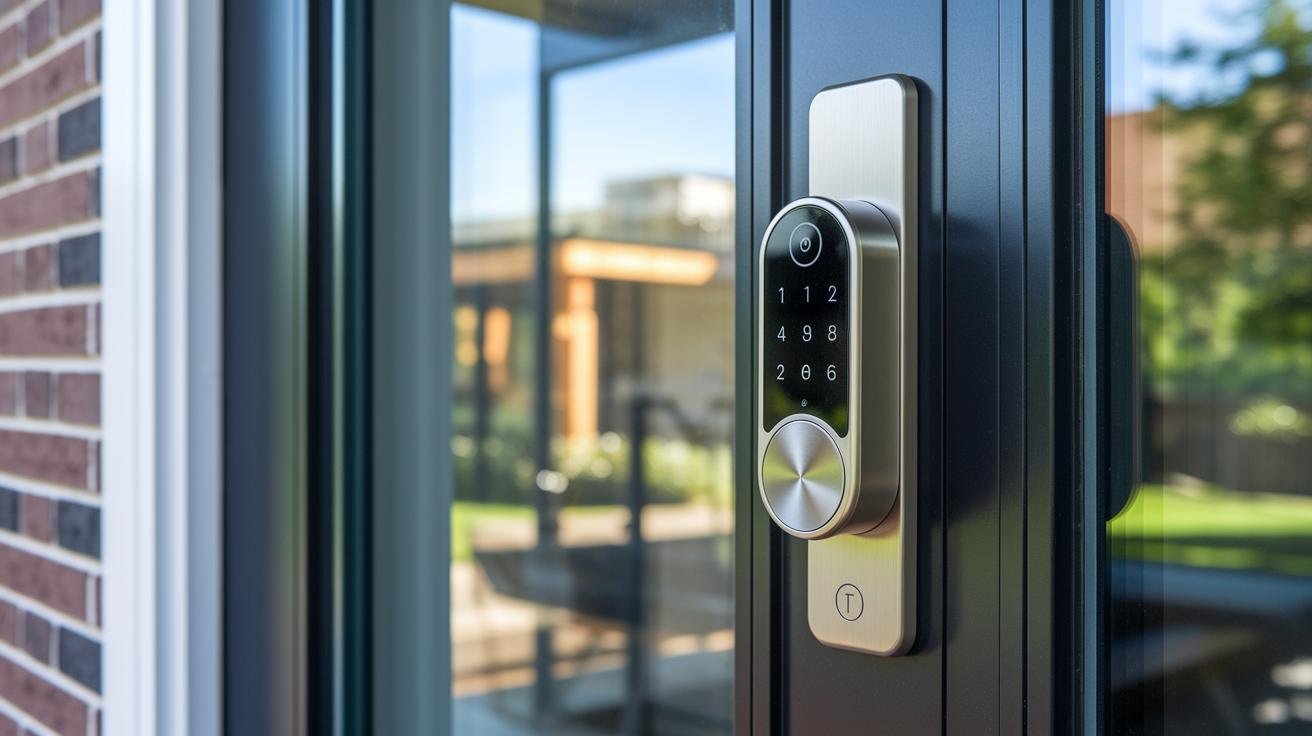
China’s smart lock market has grown at a double-digit compound annual growth rate (CAGR) thanks to breakthroughs in artificial intelligence (AI), the Internet of Things (IoT), and cloud computing (online data storage and processing).
Factories in Shenzhen and Guangzhou have been making locks for homes and businesses since 2011, and they know how to balance speed with strict safety checks.
Importers get big savings: about 20 to 30 percent less per unit compared to U.S. models, and the quality stays high.
Solid.
Even with new tariffs in place, many suppliers absorb extra costs by tightening up their bills of materials. It’s part of the lean manufacturing strategies that drive China’s competitive prices.
Lean and mean.
Here’s what you get when you source from top Chinese factories:
- 20 to 30 percent lower price per lock than U.S. alternatives.
- High-volume production that can make thousands of units with lead times as short as four weeks.
- Tech-rich designs: a smooth metal faceplate, integrated biometric sensors (devices that scan your unique fingerprint pattern), Bluetooth and Wi-Fi modules (wireless connectivity modules), and cloud-based access logs (online entry records).
- Backed by government research and development (R&D) incentives that help keep innovation costs low.
- Fast-paced updates driven by rising global demand.
You’ll also see CE (a European safety mark), RoHS (rules that limit toxic materials), and FCC (U.S. electronics standards) certifications on every model.
Peace of mind.
Rental-property managers and hotel directors are snapping these up. That steady demand means room for lasting partnerships.
Manufacturers like top Chinese smart lock manufacturers set the example with proven track records, consistent quality, and quick order turnarounds, exactly what U.S. smart home projects need.
Smart Lock Sourcing Strategies in China
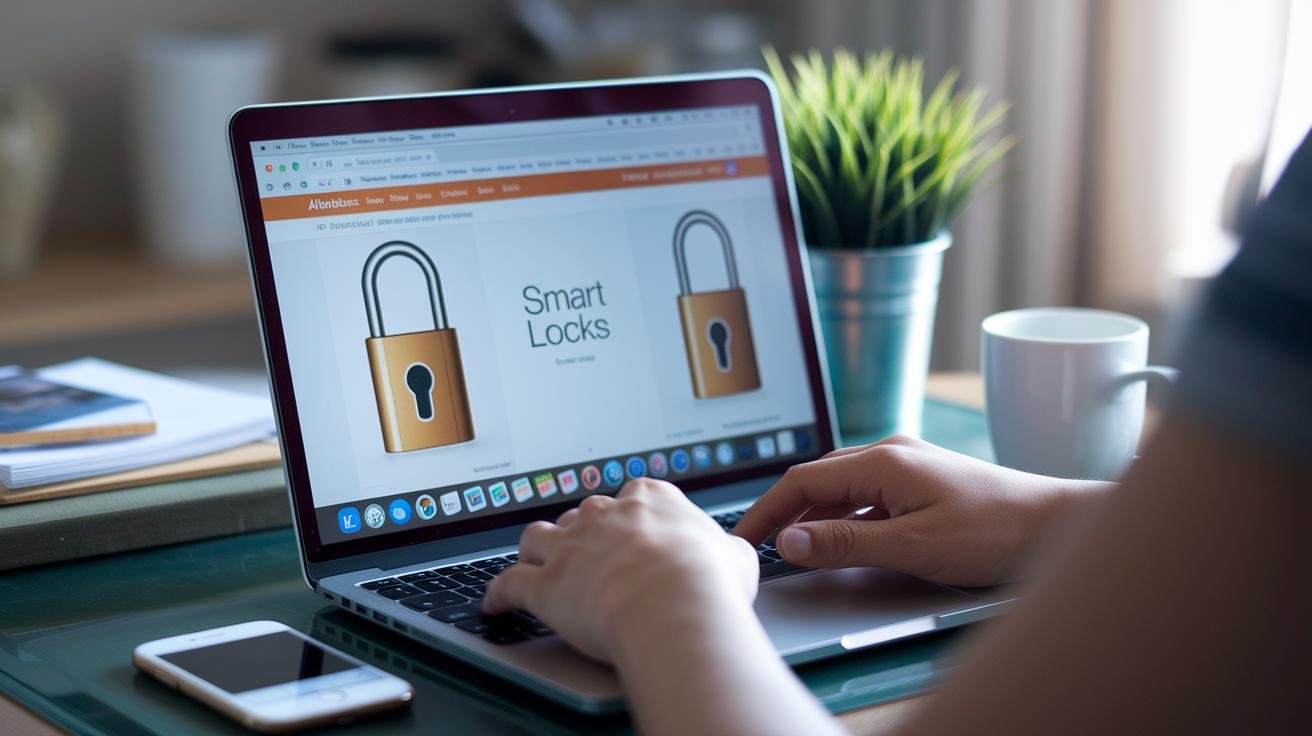
Sourcing smart locks from China? You’ve got options. Platforms like Alibaba and Made-in-China bring Chinese smart lock makers together in one place. You can filter by tech, Bluetooth, biometric fingerprint sensor (a reader that checks your unique fingertip pattern), or Wi-Fi module, and see specs side by side.
Thousands of OEMs, wholesalers, and private-label factories show their catalogs here. Requesting quotes takes minutes. You’ll get factory location, CE certification, minimum order quantities (the fewest units you can order), and shipping terms all on one dashboard. Solid.
Prefer a hands-on look? Trade shows like the Canton Fair put makers and buyers under the same roof. You’ll feel the smooth metal faceplate on sample locks and chat with production teams about assembly details. It’s like stepping onto the factory floor, buzzing lines and all.
No travel? No problem. Local sourcing agents speak the dialects, arrange sample orders, set up factory visits, and lock in prices. They’re your on-the-ground partners for cross-border deals.
Most factories set minimum order quantities (MOQs) between 50 and 500 units, based on lock features and custom options. You can use MOQs to negotiate tiered pricing or small sample runs for final sign-off. Back to our fingerprint lock…
Smart partnerships take off when you discuss flexible order schedules, private-label branding, and long-term volume plans. When you lock in these terms, you’ll get faster lead times, extra design tweaks like laser engraving, and lower per-unit costs on repeat orders. Win-win.
Quality Assurance and Certification for China-Sourced Smart Locks
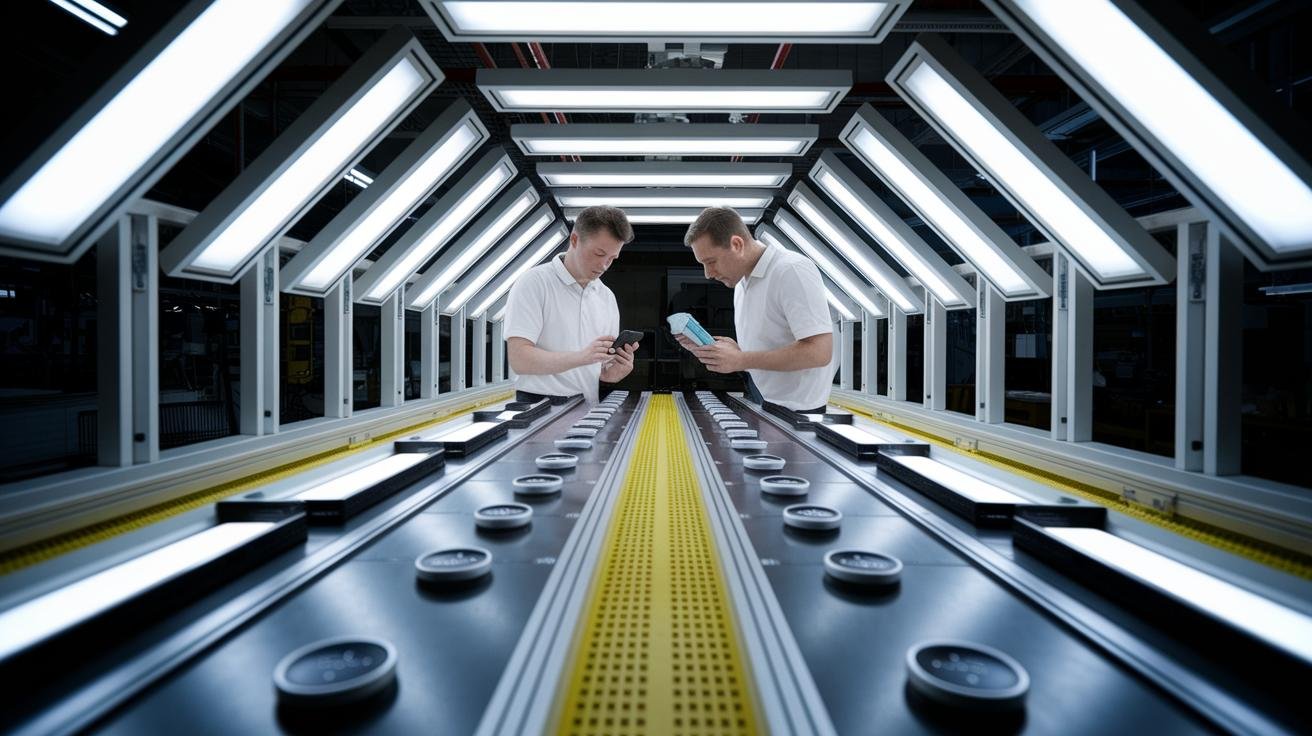
Look for CE certified (European safety), FCC approved (U.S. wireless), RoHS compliant (toxic material limits), and China 3C certified marks on the smooth metal faceplate or printed on the carton. Each stamp tells you the lock met strict rules, from European safety checks to U.S. radio rules and China’s national electronics tests. It’s a quick way to trust the product before you place a bulk order. Smart.
A factory audit tour in China feels like walking the production line yourself. You’ll see process controls, inspect spot welding seams, and trace each part back to its source. Pre-shipment teams pop open cartons, count parts, and run sample tests on hardware tolerances and firmware features. That hands-on check can catch if a biometric fingerprint sensor (a reader that checks your unique fingertip pattern) sticks or if an OTA update stalls during download.
Integrate lock quality checks right into your import workflow by adding audit and inspection steps to your contracts. Start with a sample run and test latch alignment, app pairing, and battery life before you make the final payment. Then bring in a third party lab to validate firmware stability and encryption. Follow a simple import compliance guide so your customs paperwork and certificates match what’s actually in the boxes. No surprises at the shipping dock. Projects stay on schedule.
Logistics and Compliance for Bulk Smart Lock Imports from China

Planning a bulk import of smart locks means getting cozy with Incoterms (the shipping rules that set who pays what). Each term moves costs and risks around like pieces on a chessboard. It’s smart to know your moves before you play.
FOB (free on board) China: You load the locks onto the ship in Shenzhen and then the ball’s in your court. Sea freight feels like waiting for a slow train. It takes about 18 to 25 days for that smooth metal container to roll into Los Angeles. You set it up and pay once the crates clink onto the deck.
CIF (cost, insurance, freight) lets your supplier handle freight and insurance until the port. You get off easy and skip arranging expensive coverage.
DDP (delivered duty paid) wraps duties, delivery, and fees into one neat package.
Air freight is the express lane. Your locks land in the US in about 3 to 7 days, but the cost climbs. Perfect for a last-minute restock, not your daily driver.
Customs clearance means a neat stack of paperwork and a bit of patience. You’ll unlock each gate to get your shipment moving.
- Commercial invoice (your bill of sale)
- Packing list (what’s tucked inside each box)
- Bill of lading (the shipping receipt)
- Import license (if your smart locks need special clearance)
US duty on smart locks (HS 8301.40) usually runs two to four percent. Use an import duty calculator to lock in the exact rate. Having the right HS code and proof of origin (where the locks were made) keeps customs from tagging your containers.
To keep your supply chain humming, group smaller orders into fewer containers, negotiate volume rates with carriers, and time shipments around port schedules. And teaming up with a customs broker is like having a friend who knows every shortcut. They keep surprise fees off your desk and your timeline on track.
Smooth.
IoT and Technological Features of China Smart Locks
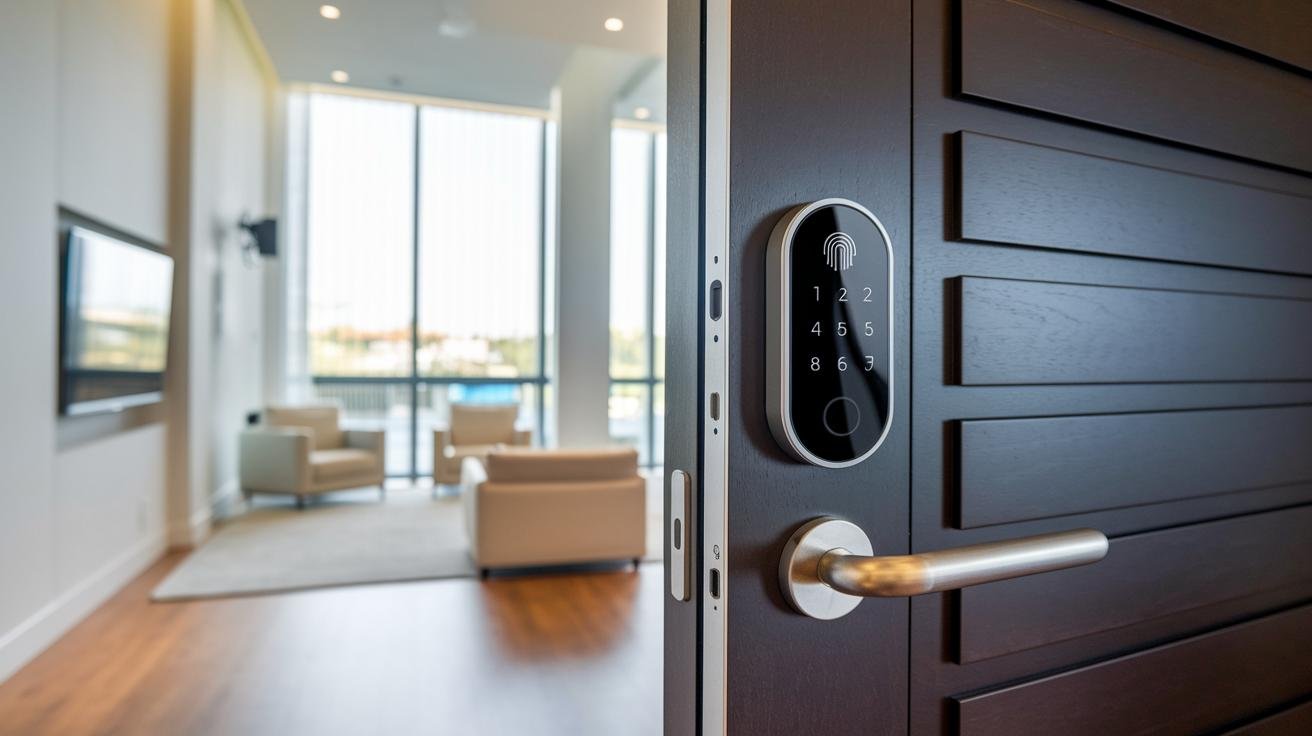
Chinese smart lock makers squeeze tons of IoT features into every smooth metal faceplate. Want to know a secret? You’ll find Bluetooth LE (low-energy local link) and Wi-Fi built in. Plus they offer Zigbee (low-power mesh network) and Z-Wave integration for bigger setups.
Many models also have biometric fingerprint sensors (a reader that checks your unique fingertip pattern) and facial recognition (camera-based ID). They team up with mobile apps for remote unlocks and cloud logs (online entry records).
These locks usually run on AA or rechargeable battery packs rated for six to twelve months. When power dips, you’ll get a low-battery alert straight to your dashboard. And end-to-end encryption plus over-the-air firmware updates keep you secure against new threats.
Solid.
- Bluetooth LE locks let you manage entry locally, pair with your app, and unlock when you’re nearby.
- Wi-Fi locks push real-time notifications to your phone and cloud dashboard.
- Zigbee (low-power mesh) and Z-Wave (mesh network) locks fit into home automation hubs for one-stop control.
- NFC (tap-and-go wireless) and RFID (radio-frequency ID) let you use cards or phones for hands-free entry.
- Fingerprint locks (biometric fingerprint sensor) and face recognition locks scan unique patterns and offer time-limited guest codes.
- GSM keypad locks use cellular networks for PIN entry and get firmware patches automatically.
On sites like Alibaba, you can line up specs side by side and compare features and pricing in minutes. Top bluetooth door lock factory examples show how these smart locks play nice with Google Home, Amazon Alexa, or Apple HomeKit. And routine over-the-air updates keep your lock ready for new encryption standards.
With the mobile app, you can assign time-limited codes, view audit trails, and deactivate lost credentials instantly. Some models even offer predictive maintenance – it’s like your lock texting you before the battery dies.
MOQ, Customization and Private Label Smart Locks from China
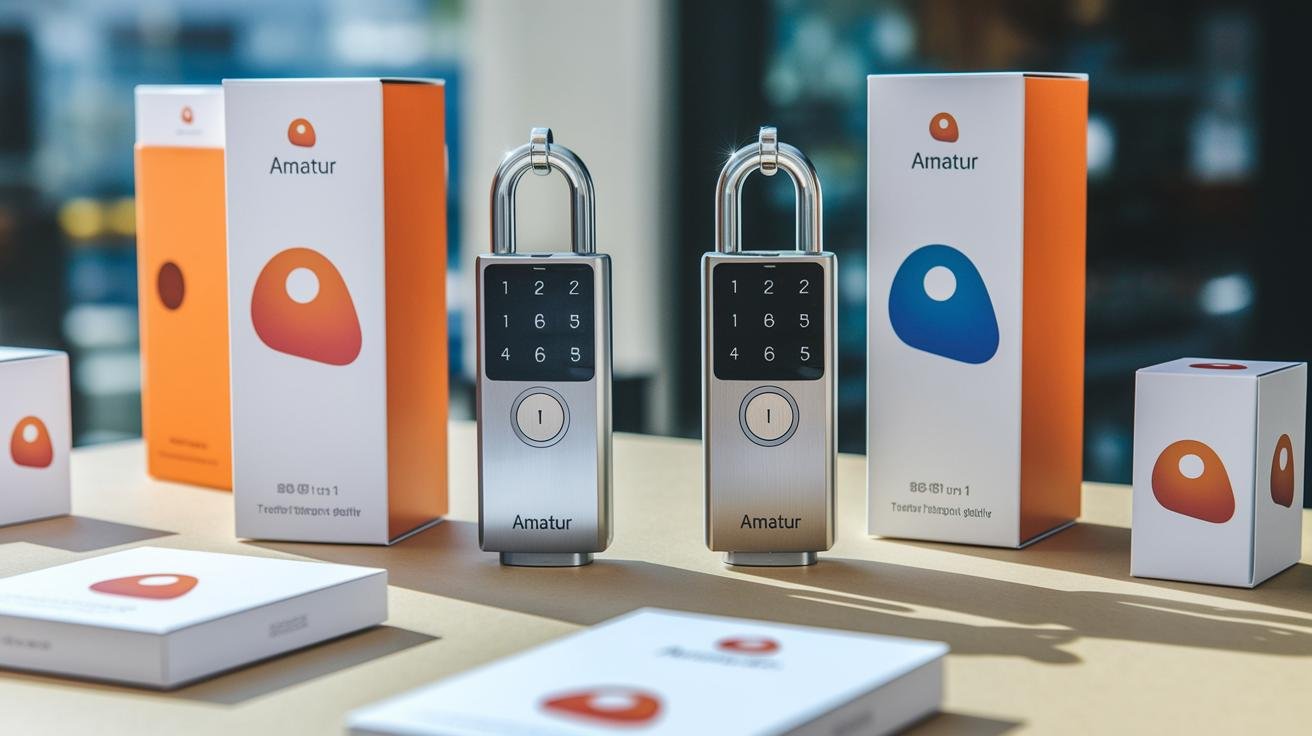
MOQs (minimum order quantities) for smart locks run from 50 to 300 units. Want a test run? Samples start at 1 to 10 units. Order more and you tap into tiered pricing. As volume goes up, your cost per lock drops, bringing better profit margins.
Easy.
Warranty & After-Sales Support
Our standard warranty runs one to two years. It covers hardware defects and firmware updates (the internal software that keeps your lock humming).
And our after-sales support has your back. We source spare parts fast so you hear that reassuring click again. Need help? Our tech team does remote troubleshooting and firmware updates. And if a lock ever fails, we ship a rapid replacement to keep you secure.
These ongoing services build trust and set the stage for repeat orders.
Financial Analysis and ROI of Importing Smart Locks from China

Calculating your total landed cost is like stacking every piece of a lock into one number. You start with the unit price, then add freight, insurance, duties, and handling fees. Most importers in China ask for a 30 percent deposit up front and the rest when the bill of lading arrives. It keeps things moving but can catch you off guard if you don’t plan for it.
Using a letter of credit (L/C) or escrow services feels like a safety net (a bank-backed promise that pays suppliers once conditions are met). It spreads risk across manufacturing and transit. By outlining payment milestones in your contract, you dodge surprise customs fees or inspection delays. Your cash flow stays as steady as a soft LED glow on a smart-lock keypad.
Right now US-China tariffs on smart locks hover around 25 percent. That’s a big line item in any price model. To project ROI, compare your landed-cost-per-unit against quotes from domestic suppliers. Bulk orders often shave another 5 to 10 percent off each lock, so size matters.
Run a simple break-even calculation to see how many units you need before profit kicks in. Then add a buffer for unexpected fees, think of it as extra padding in your risk plan. Soon enough, you’ll hear that reassuring click of profit at the end of the day.
Final Words
Jumping in, we covered market growth, cost savings and production scale behind importing smart locks from China.
We outlined sourcing from Alibaba, Canton Fair visits and inspection steps for peace of mind.
Then we walked through shipping terms, customs must-haves and landed-cost basics for smooth logistics.
Next we explored IoT features, from Bluetooth to biometric sensors (a fingerprint reader) plus private-label options.
Finally we ran numbers on landed cost and ROI.
That shows why import smart locks from China can boost your bottom line and open new growth paths for your business.
FAQ
What are the risks of smart locks?
The risks of smart locks include hacking attempts, battery failures, and software glitches. Using strong passcodes and backup keys helps guard against lockouts and cyber attacks.
Why are smart locks so expensive?
Smart locks cost more because they use advanced parts, biometric fingerprint sensors (a reader that checks your unique fingertip pattern), encryption (coding that scrambles data), and sturdy metals. Ongoing updates and installation add to price.
What is the purpose of the smart lock?
The purpose of a smart lock is to offer keyless entry, remote management via mobile apps, and time-limited codes for visitors. It boosts convenience and lets you control access from anywhere.
How is AI used in smart locks?
AI in smart locks learns daily patterns to grant seamless access to familiar users and spot unusual activity, like repeated wrong codes. It can also trigger tamper alerts for enhanced peace of mind.
